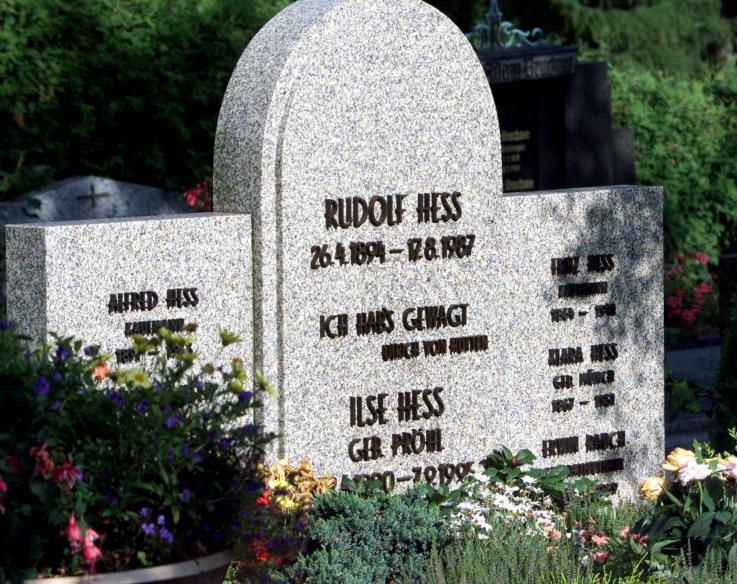Featured Image from: Newsweek
When a person known for their bravery, kindness, wisdom, good leadership, and overall good deeds dies, you can imagine what their gravestone looks like: a huge burial plot, possibly an entire mausoleum, if not the entire memorial park, dedicated to that person. People would come to visit to celebrate that person’s accomplishments and light a candle for their memory. Some would even be so well-respected that their governments hold holidays in their honor.
But what about people like Adolf Hitler, responsible for not only the death of millions of Jews, but for instigating the Nazi movement and creating a new wave of antisemitic, homophobic, and misogynistic Neo-Nazis? Well, for Hitler, the German government thought it was best to keep quiet about his final resting place until 2006, when they revealed Hitler was buried in what was now an ordinary parking lot in Berlin. And the parking lot and adjacent ordinary-looking buildings was not an accident; the government really tried to downplay his resting place – and for good reason.
Hitler’s Death

In early 1945, when it appeared the Germans were losing World War II, Hitler and a group of trusted Nazi leaders and their families went underground in an air raid shelter in Berlin known as the Führerbunker, the last of his headquarters. This was where he lived until the final week of World War II, where he married Eva Braun on April 29, and then, less than two days later, committed joint suicide.
Hitler and his wife were later pulled out of the bunked and their bodies burned in a nearby garden. Soviet intelligence operatives later found that other people in the bunker – including six children of Nazi politician Joseph Goebbels – supposedly committed suicide via cyanide poisoning.
The Quiet Discovery

After Hitler’s death, the Soviets burned down the adjacent buildings, which were then part of Nazi’s operations, but they could not destroy the bunker. The area was left deserted until after the Berlin Wall fell and the government found several sections before discovering they were in Hitler’s final home. They attempted to destroy some parts of the bunker, though rumor has it, some of the rooms are still intact, though inaccessible to the public.
The German government spent decades trying to rebuild their image with the international community and the millions of Jewish families that died because of their politicians. To discover the bunker meant that they had discovered Hitler’s final resting place, and they feared that announcing this information would attract Neo-Nazis from all over the world to pay homage to Hitler. At worst, they would turn the area into a shrine, memorializing Hitler like he was some kind of hero.
Instead, they decided to keep quiet about the location. Since no buildings had been erected in the area since World War II, the government built ordinary-looking offices, apartment buildings, and a parking lot around the area to make it look as ordinary and unremarkable as possible. By doing so, no one would ever suspect that, underneath them was the final resting place of the man responsible for the death of millions of people.
Going Public
The government had kept quiet about Hitler’s final resting place until 2006. There was nothing ceremonious about their announcement, though. One day before the 2006 World Cup in Germany, the state government of Berlin decided to recognize Hitler’s death place.
They only chose to quietly place a plaque recognizing the place of Hitler’s death by the parking lot at the intersection of In den Ministergärten and Gertrud-Kolmar-Straße. The plaque detailed the historical background, information to dispel any rumors and a schematic diagram of the bunker, which remained closed to the public.
An “Ordinary” Street

In both instances, we can see the rationale behind the government’s decision to hide and then reveal the truth to the public. After the war, Germany needed to rebuild itself. Being responsible for the death of millions and surrounded by nations they had harmed during the war, they needed to get rid of any memory of Hitler. Knowing that Hitler continued to have supporters in supremacists and Neo-Nazis, they were afraid that the past would come back to haunt them in the form of memorials and shrines. And to have a Hitler shrine in Germany would be like spitting in the faces of people who had perished under the Nazi regime and their surviving family members.
By securing the area as an ordinary street, no one would suspect the area of having a hidden history. The government clearly doesn’t celebrate what Hitler did, and by keeping the area unremarkable, there’s no denying that they do not wish to turn Hitler into a hero or popular figure their supporters can pay homage to.
Their decision to go public, however, after so many years later, is also a sign of progress. By showing people they are ready to know the truth about the non-descript parking lot, they believe there are enough people in the world to understand what Hitler did was wrong. By admitting that they turned Hitler’s grave into an accessible parking lot people can enter and leave with its flimsy gates, they show how little respect they had for the man. And with such easy access, it’s easy for anyone to drop by and spit on the ground in his memory.
The German Government’s actions reflect on the city, their history, and how they uphold their past. By refusing to celebrate Hitler and turn his death place into an unremarkable location, they’re killing two birds with one stone: refusing to honor the leader of the Nazi regime, and trying to rebuild the country’s image with one that does not support Hitler’s beliefs and practices against the Jewish population.




